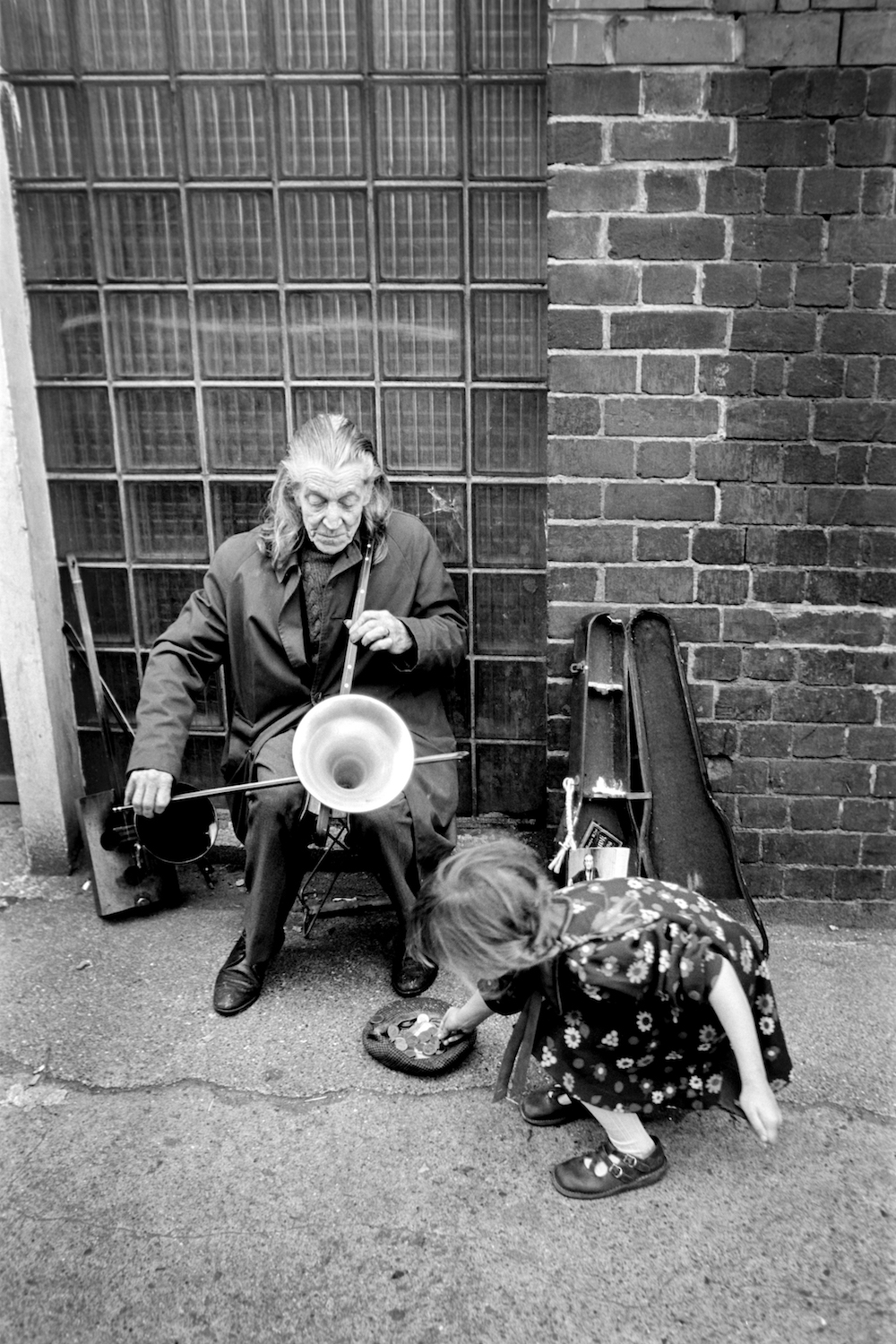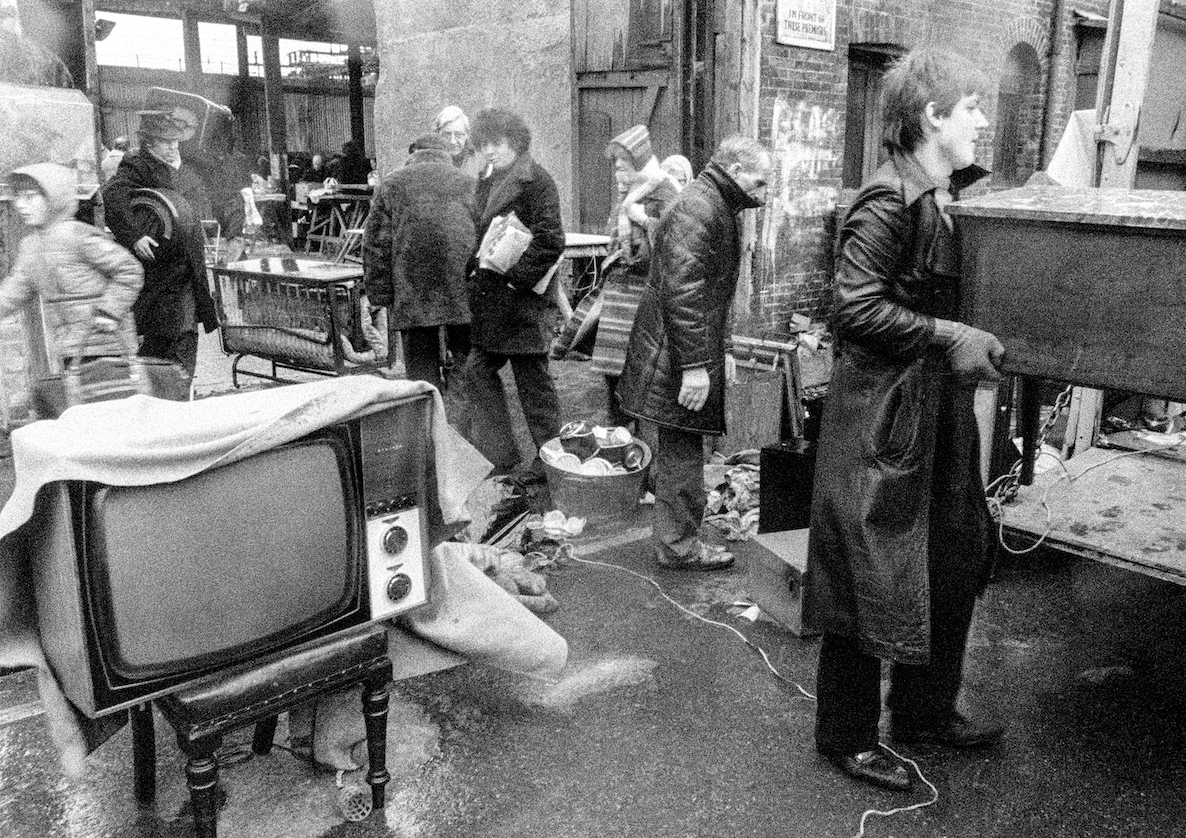Few streets are as instantly recognisable as Brick Lane. Over the centuries, the area has seen the settlement of working-class French, Irish, Jewish and Bangladeshi communities, with each group leaving their distinct mark on the area. While faced with rapid gentrification over the years, Brick Lane – also fondly known as Banglatown – is still home to diverse cultures and businesses, with everything from distilleries to weavers’ factories forming part of its evolution.
Photographer Fran May was 21-years-old and studying for an MA at the Royal College of Art when she first heard about Brick Lane. She’d developed a penchant for social documentary photography while studying Fine Art at university in Sheffield, travelling to over twenty destinations to take photographs during her time there. These trips included Sunderland to capture shipbuilding, Manchester to shoot the visitors at the Belle Due Zoo, and Scarborough to photograph the fishing boats.


After arriving in London for her MA, she’d found navigating the city “exhausting” and “daunting”, she remembers. “Somebody said to me, ‘Well, if you want to photograph people, I know a really cool place you could go,’” she says. “I was warned I had to go early in the morning, or I’d miss it.”
In 1971, May resolved to catch the bus from South Kensington to East London at dawn. This was before gentrification had crept into the area, and East London was still recovering from wartime derelictions. “It was like stepping into a different world,” May recalls. “A different universe; a film set. Characters, faces, businesses, from another time, caught in a time warp… It was amazing”
Among the people she captured were the market stall vendors, customers looking through the looming piles of second-hand garments and knickknacks, street musicians performing for passers-by, and children roaming amid the rubbish and remnants that line the streets. These photos form part of a new book, titled Brick Lane 1970s (Café Royal Books), which captures the diversity of characters coexisting on the iconic road.


May says she usually wouldn’t ask permission to shoot her subject, instead, she recalls wandering around, blending into her surroundings. “I had long hair, very unkempt, had no money – I couldn’t afford the hairdressers and wore a duffle coat… it felt like the perfect disguise,” she recalls. “I had my camera over my left eye when I photographed, which made me feel invisible.”
After shooting there for a few weeks, May kept the photos mainly to herself. That was until some months later, when she was taught by the seminal documentary photographer, Bill Brandt. She remembers taking the photos of Brick Lane to Brandt’s house, where he advised her: “Don’t ever think of these as just student work. There’s one day they will have social significance. Just don’t lose them.”
Thankfully, May kept her images safe. Seen today, as Brick Lane faces heightened threats of gentrification amid Covid-19, the images serve as vital documents – and a reminder of the importance of defending – the bustling spirit and unique character of the area.





Brick Lane 1970s is now available on Café Royal Books.
Discover more of Fran May’s work on her official website.
Enjoyed this article? Like Huck on Facebook or follow us on Twitter.
You might like

On a night out with the cast of Skins, Ewen Spencer captured millennial hedonism in all its unabated, messy glory
One Night in Watford — Commissioned to take promotional pictures for the generation-defining teen drama before it hit screens, the legendary youth culture photographer revisits the fun-fuelled evening, which was equal parts work and play, in his new photobook.
Written by: Isaac Muk

Largest-Ever Display of UK AIDS Memorial Quilt Opens at Tate Modern
Grief Made Visible — Comprising hundreds of panels made by lovers, friends and chosen family, the UK AIDS Memorial Quilt returns in full for the first time since 1994 – a testament to grief, friendship and the ongoing fight against HIV stigma.
Written by: Ella Glossop

The carnival and community of New York’s block parties
Soul of the Summer — Since attending his first street party in Crown Heights two decades ago, photographer Anderson Zaca has spent his summers travelling across New York’s five boroughs, documenting over 300 in the process.
Written by: Miss Rosen

The Getty Center’s first exclusively queer exhibition opens today
$3 Bill: Evidence of Queer Lives — Running until September, it features paintings, ephemera, video and photography to highlight LGBTQ+ histories, culture and people from 1900 to the present day.
Written by: Isaac Muk

Remembering New York’s ’90s gay scene via its vibrant nightclub flyers
Getting In — After coming out in his 20s, David Kennerley became a fixture on the city’s queer scene, while pocketing invites that he picked up along the way. His latest book dives into his rich archive.
Written by: Miss Rosen

On Alexander Skarsgård’s trousers, The Rehearsal, and the importance of weirdos
Freaks and Finances — In the May edition of our monthly culture newsletter, columnist Emma Garland reflects on the Swedish actor’s Cannes look, Nathan Fielder’s wild ambition, and Jafaican.
Written by: Emma Garland


